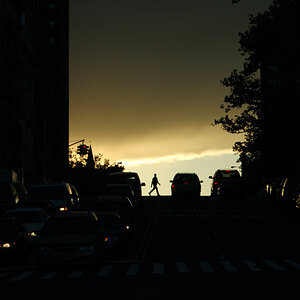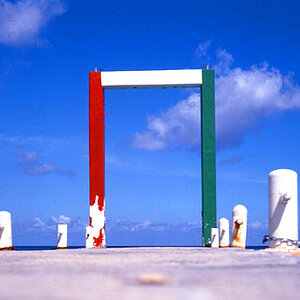Navigation
Install the app
How to install the app on iOS
Follow along with the video below to see how to install our site as a web app on your home screen.

Note: This feature currently requires accessing the site using the built-in Safari browser.
More options
You are using an out of date browser. It may not display this or other websites correctly.
You should upgrade or use an alternative browser.
You should upgrade or use an alternative browser.
Idol Hands
- Thread starter Fred Berg
- Start date
ceejtank
No longer a newbie, moving up!
- Joined
- Sep 28, 2011
- Messages
- 764
- Reaction score
- 118
- Location
- Weymouth, MA
- Can others edit my Photos
- Photos NOT OK to edit
Very interesting. Like the processing, not the subject matter.
waday
Do one thing every day that scares you
- Joined
- Jul 21, 2014
- Messages
- 7,485
- Reaction score
- 3,599
- Can others edit my Photos
- Photos NOT OK to edit
Very nice. I like the processing.
I'm not that much of a religious person, but it doesn't bother me? Should it?
...not the subject matter.
I'm not that much of a religious person, but it doesn't bother me? Should it?

- Joined
- Jun 9, 2013
- Messages
- 20,580
- Reaction score
- 12,709
- Website
- moderndinosaur.wordpress.com
- Can others edit my Photos
- Photos NOT OK to edit
Very nice. I like the processing.
...not the subject matter.
I'm not that much of a religious person, but it doesn't bother me? Should it?
I like the shot, too. As for the subject matter, I suspect the horns are the controversial part, but it's also curious that the first three commandments are in big numerals and prominent while the others are crammed on to the second tablet. "Thou shalt not have any gods before me; thou shalt not make idols; thou shalt not take the name of the Lord in vain." A bit of irony from the sculptor?
I'm really curious about this piece, actually.
waday
Do one thing every day that scares you
- Joined
- Jul 21, 2014
- Messages
- 7,485
- Reaction score
- 3,599
- Can others edit my Photos
- Photos NOT OK to edit
I suspect the horns are the controversial part
That's what I figured, but I thought a lot of Medieval/early Renaissance artists depicted Moses with horns? Even Michelangelo's statue of Moses had them.
- Joined
- Jun 9, 2013
- Messages
- 20,580
- Reaction score
- 12,709
- Website
- moderndinosaur.wordpress.com
- Can others edit my Photos
- Photos NOT OK to edit
I suspect the horns are the controversial part
That's what I figured, but I thought a lot of Medieval/early Renaissance artists depicted Moses with horns? Even Michelangelo's statue of Moses had them.
Huh - this is an interesting read: The Horns of Moses Defending Michelangelo s Horned Moses Taylor Marshall
- Joined
- Dec 11, 2006
- Messages
- 18,743
- Reaction score
- 8,047
- Location
- Mid-Atlantic US
- Website
- www.lewlortonphoto.com
- Can others edit my Photos
- Photos NOT OK to edit
This really is a fairly straight-on picture of another person's art without much that the photography or photographer has added, besides a crop.
waday
Do one thing every day that scares you
- Joined
- Jul 21, 2014
- Messages
- 7,485
- Reaction score
- 3,599
- Can others edit my Photos
- Photos NOT OK to edit
Very neat read! Thanks for sharing! I, too, want to believe Michelangelo's horns weren't a literal translation error.I suspect the horns are the controversial part
That's what I figured, but I thought a lot of Medieval/early Renaissance artists depicted Moses with horns? Even Michelangelo's statue of Moses had them.
Huh - this is an interesting read: The Horns of Moses Defending Michelangelo s Horned Moses Taylor Marshall
Given this quote from the article:
I can understand why people would be afraid. If some guy was running around ecstatic, with some crazy look on his face, carrying stones with "the word of God", and saying that he just "spoke with God"... I'd be a little afraid, too.And when Moses came down from the Mount Sinai, he held the two tables of the testimony, and he knew not that his face was horned from the conversation of the Lord. And Aaron and the children of Israel seeing the face of Moses horned, were afraid to come near.
So, horned in this case definitely doesn't mean he literally had horns.
Good article. I don't know if I buy the guy's claim that they are "horns of light", though...
timor
Been spending a lot of time on here!
- Joined
- Feb 28, 2011
- Messages
- 5,905
- Reaction score
- 890
- Location
- Toronto ON
- Can others edit my Photos
- Photos NOT OK to edit
I like this interpretation:
"A book published in 2008 advanced a theory that the "horns" on Michelangelo's statue were never meant to be seen and that it is wrong to interpret them as horns: "[The statue] never had horns. The artist had planned Moses as a masterpiece not only of sculpture, but also of special optical effects worthy of any Hollywood movie. For this reason, the piece had to be elevated and facing straight forward, looking in the direction of the front door of the basilica. The two protrusions on the head would have been invisible to the viewer looking up from the floor below — the only thing that would have been seen was the light reflected off of them." ( Blech, Benjamin, & Doliner, Roy (2008). The Sistine Secrets, p. 238. HarperCollins. ISBN 9780061469053 )
Michelangelo was a master of visual trickery and this seems to be plausible.
Nevertheless good shot, well worth to be put in history of art textbooks with some note of who's sculpture it is and where it is on display.
"A book published in 2008 advanced a theory that the "horns" on Michelangelo's statue were never meant to be seen and that it is wrong to interpret them as horns: "[The statue] never had horns. The artist had planned Moses as a masterpiece not only of sculpture, but also of special optical effects worthy of any Hollywood movie. For this reason, the piece had to be elevated and facing straight forward, looking in the direction of the front door of the basilica. The two protrusions on the head would have been invisible to the viewer looking up from the floor below — the only thing that would have been seen was the light reflected off of them." ( Blech, Benjamin, & Doliner, Roy (2008). The Sistine Secrets, p. 238. HarperCollins. ISBN 9780061469053 )
Michelangelo was a master of visual trickery and this seems to be plausible.
Nevertheless good shot, well worth to be put in history of art textbooks with some note of who's sculpture it is and where it is on display.

waday
Do one thing every day that scares you
- Joined
- Jul 21, 2014
- Messages
- 7,485
- Reaction score
- 3,599
- Can others edit my Photos
- Photos NOT OK to edit
That's very interesting. I'd like to see this in person for that effect!I like this interpretation:
"A book published in 2008 advanced a theory that the "horns" on Michelangelo's statue were never meant to be seen and that it is wrong to interpret them as horns: "[The statue] never had horns. The artist had planned Moses as a masterpiece not only of sculpture, but also of special optical effects worthy of any Hollywood movie. For this reason, the piece had to be elevated and facing straight forward, looking in the direction of the front door of the basilica. The two protrusions on the head would have been invisible to the viewer looking up from the floor below — the only thing that would have been seen was the light reflected off of them." ( Blech, Benjamin, & Doliner, Roy (2008). The Sistine Secrets, p. 238. HarperCollins. ISBN 9780061469053 )
Michelangelo was a master of visual trickery and this seems to be plausible.
Nevertheless good shot, well worth to be put in history of art textbooks with some note of who's sculpture it is and where it is on display.
timor
Been spending a lot of time on here!
- Joined
- Feb 28, 2011
- Messages
- 5,905
- Reaction score
- 890
- Location
- Toronto ON
- Can others edit my Photos
- Photos NOT OK to edit
I don't know, if this is possible, The figure of Moses was supposed to be placed almost 4 meters above the ground, but ended up in the lower tier. In the wrong place for mentioned above effect.That's very interesting. I'd like to see this in person for that effect!I like this interpretation:
"A book published in 2008 advanced a theory that the "horns" on Michelangelo's statue were never meant to be seen and that it is wrong to interpret them as horns: "[The statue] never had horns. The artist had planned Moses as a masterpiece not only of sculpture, but also of special optical effects worthy of any Hollywood movie. For this reason, the piece had to be elevated and facing straight forward, looking in the direction of the front door of the basilica. The two protrusions on the head would have been invisible to the viewer looking up from the floor below — the only thing that would have been seen was the light reflected off of them." ( Blech, Benjamin, & Doliner, Roy (2008). The Sistine Secrets, p. 238. HarperCollins. ISBN 9780061469053 )
Michelangelo was a master of visual trickery and this seems to be plausible.
Nevertheless good shot, well worth to be put in history of art textbooks with some note of who's sculpture it is and where it is on display.
waday
Do one thing every day that scares you
- Joined
- Jul 21, 2014
- Messages
- 7,485
- Reaction score
- 3,599
- Can others edit my Photos
- Photos NOT OK to edit
Whomp.I don't know, if this is possible, The figure of Moses was supposed to be placed almost 4 meters above the ground, but ended up in the lower tier. In the wrong place for mentioned above effect.That's very interesting. I'd like to see this in person for that effect!I like this interpretation:
"A book published in 2008 advanced a theory that the "horns" on Michelangelo's statue were never meant to be seen and that it is wrong to interpret them as horns: "[The statue] never had horns. The artist had planned Moses as a masterpiece not only of sculpture, but also of special optical effects worthy of any Hollywood movie. For this reason, the piece had to be elevated and facing straight forward, looking in the direction of the front door of the basilica. The two protrusions on the head would have been invisible to the viewer looking up from the floor below — the only thing that would have been seen was the light reflected off of them." ( Blech, Benjamin, & Doliner, Roy (2008). The Sistine Secrets, p. 238. HarperCollins. ISBN 9780061469053 )
Michelangelo was a master of visual trickery and this seems to be plausible.
Nevertheless good shot, well worth to be put in history of art textbooks with some note of who's sculpture it is and where it is on display.

Fred Berg
Been spending a lot of time on here!
- Joined
- May 17, 2011
- Messages
- 1,802
- Reaction score
- 748
- Can others edit my Photos
- Photos NOT OK to edit
Very interesting. Like the processing, not the subject matter.
Thanks, I appreciate your objectivity and candour.
Very nice. I like the processing.
...not the subject matter.
I'm not that much of a religious person, but it doesn't bother me? Should it?
Thanks. I'm also not very religious, however, religion and belief systems interest me enormously. I think it should possible to explore such subject matter without any strings being attached.
Very nice. I like the processing.
...not the subject matter.
I'm not that much of a religious person, but it doesn't bother me? Should it?
I like the shot, too. As for the subject matter, I suspect the horns are the controversial part, but it's also curious that the first three commandments are in big numerals and prominent while the others are crammed on to the second tablet. "Thou shalt not have any gods before me; thou shalt not make idols; thou shalt not take the name of the Lord in vain." A bit of irony from the sculptor?
I'm really curious about this piece, actually.
Thanks. Yes, it was the horns that caught my attention here. When I first noticed this panel I took it to be a depiction of the Devil, which occurs occasionally in churches locally, but upon closer inspection I realised it must be Moses. And Yes, the relative size of the commandments is intriguing, isn't it?
I suspect the horns are the controversial part
That's what I figured, but I thought a lot of Medieval/early Renaissance artists depicted Moses with horns? Even Michelangelo's statue of Moses had them.
As I said, I took it to be the Devil at first and only realised it was Moses upon closer inspection. It didn't occur to me to compare this to Michelangelo's statue until now. I wonder how widespread this practice might have been in this area (Bavaria) since this is the first example I can remember having seen. I will keep a look out for more horned depictions of the subject with this in mind.
I suspect the horns are the controversial part
That's what I figured, but I thought a lot of Medieval/early Renaissance artists depicted Moses with horns? Even Michelangelo's statue of Moses had them.
Huh - this is an interesting read: The Horns of Moses Defending Michelangelo s Horned Moses Taylor Marshall
Very interesting, thanks for the link.
I like this interpretation:
"A book published in 2008 advanced a theory that the "horns" on Michelangelo's statue were never meant to be seen and that it is wrong to interpret them as horns: "[The statue] never had horns. The artist had planned Moses as a masterpiece not only of sculpture, but also of special optical effects worthy of any Hollywood movie. For this reason, the piece had to be elevated and facing straight forward, looking in the direction of the front door of the basilica. The two protrusions on the head would have been invisible to the viewer looking up from the floor below — the only thing that would have been seen was the light reflected off of them." ( Blech, Benjamin, & Doliner, Roy (2008). The Sistine Secrets, p. 238. HarperCollins. ISBN 9780061469053 )
Michelangelo was a master of visual trickery and this seems to be plausible.
Nevertheless good shot, well worth to be put in history of art textbooks with some note of who's sculpture it is and where it is on display.
Thanks. I don't know who the carving is by, although I will try to find out, but I can tell you all that it is on the pulpit of St. Jakobs church in Friedberg, Bavaria.
Thanks for a very interesting and informative discussion, everyone.
Fred Berg
Been spending a lot of time on here!
- Joined
- May 17, 2011
- Messages
- 1,802
- Reaction score
- 748
- Can others edit my Photos
- Photos NOT OK to edit
This really is a fairly straight-on picture of another person's art without much that the photography or photographer has added, besides a crop.
Well, on the one hand you are right, of course, but there was quite a bit more to my critical choices here than the crop alone. I chose to present this in B&W in order to place emphasis on the form and to make the most out of light and line. I felt that a colour rendering might be distracting as well as less suited to getting the best out of the available contrast. I wanted to use the available light and so my equipment choice was also a thought out part of the shot being taken. I won't bore you with the details of the PP, suffice to say there was method and decision making involved. Here is a copy of the original shot to allow you to gain a little insight of my process from exposure to end product:
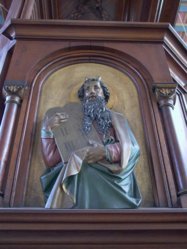
Leica Digilux 1, F2, 1/10, ISO 100, shot from hand.
ceejtank
No longer a newbie, moving up!
- Joined
- Sep 28, 2011
- Messages
- 764
- Reaction score
- 118
- Location
- Weymouth, MA
- Can others edit my Photos
- Photos NOT OK to edit
Sorry, I have been busy lately and just got on.
Only reason I'm not a fan is the horns. It's a personal preference thing, I'm not trying to say anyone else should or should not think anything. Just stating from my perspective I didn't like the subject.
I do like the B&W processing though, I don't think all shots look good in B&W, this one though I think captures it well. That's all I was trying to say.
Only reason I'm not a fan is the horns. It's a personal preference thing, I'm not trying to say anyone else should or should not think anything. Just stating from my perspective I didn't like the subject.
I do like the B&W processing though, I don't think all shots look good in B&W, this one though I think captures it well. That's all I was trying to say.

![[No title]](/data/xfmg/thumbnail/32/32003-70dfe149c27224e28ba98e975984e01e.jpg?1619735147)
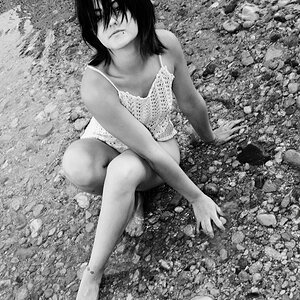
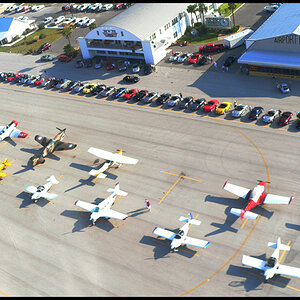
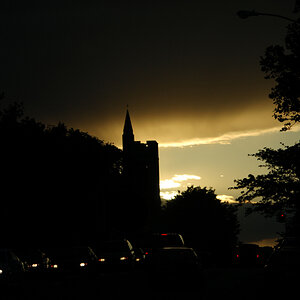
![[No title]](/data/xfmg/thumbnail/39/39498-362f11d9bfd0d9e222faa85b38801745.jpg?1619739056)


